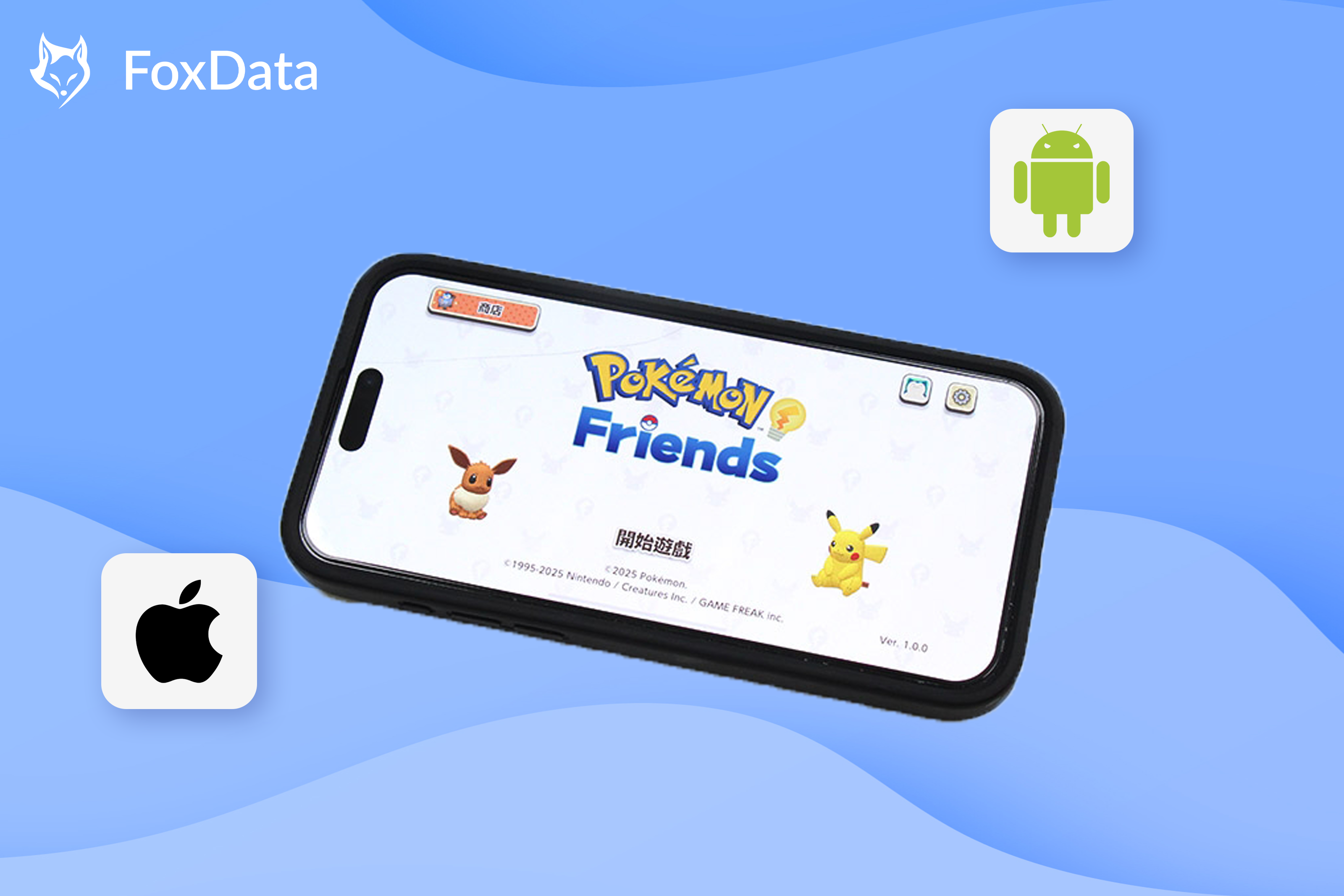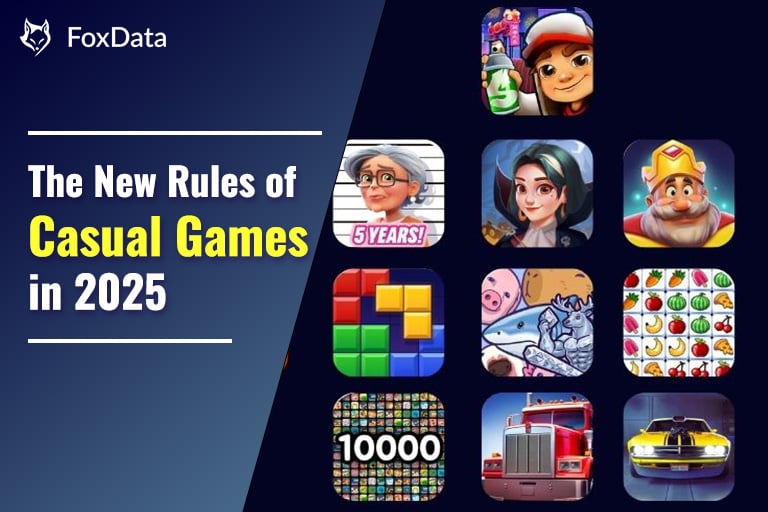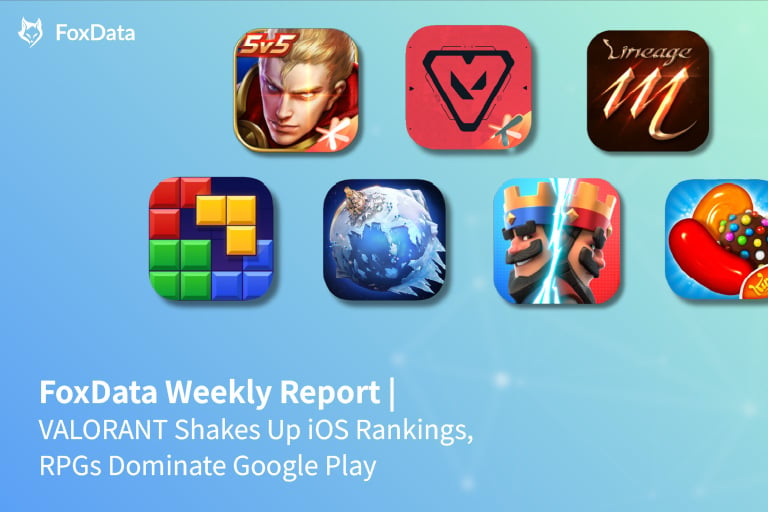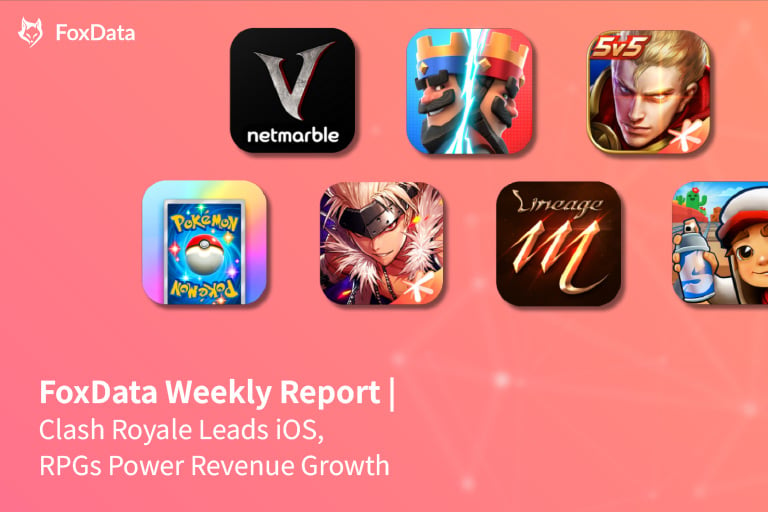Pokémon Reinvents Light-Content Strategy: How Pokémon Friends Is Redefining Mini-Game Product Design

As 2025 approaches, the innovative integration of lightweight games continues to reshape the mobile gaming landscape. Recently, the Pokémon Company launched the mini-game collection "Pokémon Friends," which has ignited widespread enthusiasm—ranking at the top of the free charts on iOS in Hong Kong and Macau, and successfully entering the Top 20 free charts in a total of 12 countries and regions, including Japan.
As a highly representative work in IP monetization and user acquisition, the rapid surge of Pokémon Friends has reignited industry discussions on "mini secondary gameplay" and cross-platform integrated volume strategies.
Could this mark a turning point in the next wave of casual game development and user acquisition tactics? With data support from FoxData and market trend analysis, a comprehensive examination is warranted.
Pokémon Friends: A Full Spectrum Overview of a Hit IP Casual Game
As one of the world's most successful gaming brands, Pokémon boasts a massive user base across both console and mobile platforms. The highlight of this new release lies in its lightweight approach through a casual game compilation, yet it is strategically deployed across iOS, Android, and Nintendo Switch/Upcoming Switch 2 platforms, delivering a lightly immersive experience with seamless cross-device interaction.
The gameplay integration in Pokémon Friends combines puzzle-solving, collection, and decoration into a cohesive trifecta. Its core design logic is not merely a collection of mini-games but a cyclical system centered around "puzzle-solving → collection → decoration → social interaction."
The game features over 1,200 puzzle challenges, such as "Connecting Pikachu in one stroke" and "Hooking the Minecart," with moderate difficulty and a fast-paced rhythm. Rewards for solving puzzles include "ball of yarn" items, which can be used to assemble plush Pokémon or decorate indoor environments.
Character customization is highly flexible, allowing players to create personalized, unique homes. The social system, exemplified by interactions with NPCs in Sikao Town, further enhances user engagement and retention.
Additionally, Pokémon Friends introduces device tilt-based motion controls, significantly enriching interactive experiences, especially resonating with younger players. Although the overall structure is lightweight, its design framework supports strong user retention, naturally aligning with monetization strategies that incorporate secondary gameplay mechanics through targeted advertising.
Business Model: A Profitable Strategy Focused on Scalability Rather Than Direct Monetization
As an IP designed for all ages, Pokémon Friends adopts a free-to-download model supplemented by paid DLC, incorporating daily play limits to prevent excessive addiction.
For more details, 👉 see Roblox’s anti-addiction settings.
Operating on a foundation where commercial motivation is not solely driven by immediate revenue, the game leverages emotional engagement and social interaction to foster word-of-mouth promotion and viral growth, effectively transforming into a brand reinforcement tool under the support of public domain traffic.
However, for other developers seeking reference, the most valuable aspect is its “user acquisition structure design”—how to attract players with lightweight gameplay, retain them through IP-based content, and optimize advertising pathways through data-driven testing.
FoxData Analysis: How Do Light Gameplay Structures Enhance User Behavior Metrics?
Monitoring user behavior data via the FoxData platform reveals that lightweight secondary gameplay structures, exemplified by Pokémon Friends, are becoming key drivers in increasing user stickiness and active engagement in the casual gaming segment.
According to app store rankings and user behavior trend data, since its launch in 2025, Pokémon Friends has performed exceptionally well in markets such as Japan, Hong Kong, and Macau, maintaining high positions on the iOS free charts and consistently ranking within the top 20 free apps in Taiwan and Singapore, demonstrating the broad applicability of lightweight products across multiple markets.
From a user behavior perspective, products that integrate puzzle-solving, collection, and decoration gameplay inherently possess a design foundation characterized by fast interaction rhythms, quick emotional triggers, and clear goal conversions. Analysis of retention trends in casual games via FoxData indicates:
- Fusion gameplay structures (e.g., puzzles + collection + room management) are conducive to enhancing player retention in lightweight products;
- Utilizing well-known IP characters as visual anchors further boosts initial day revisit rates and content exploration, effectively driving early user activity;
- Decoration systems and character interaction spaces serve as mid-term “emotional companionship” mechanisms, helping to extend user lifecycle, especially appealing to children and family-oriented audiences.
From a design standpoint, developers can utilize FoxData’s features—such as active trend analysis, download pathways, leaderboard changes, and competitor comparisons—to identify product models with these characteristics. This allows for reverse optimization of secondary gameplay structures and content release rhythms, building a lightweight yet enduring retention mindset based on structural strategies rather than solely on monetization.
Additionally, FoxData’s Ad Creative is curating content from leading global games across mainstream platforms. For developers aiming to understand niche trends from a “design perspective,” this provides a reliable information gateway. Whether in constructing children’s content or IP visual branding strategies, development teams can leverage material flow analysis to make more forward-looking product adjustments.
📍Recommendations for industry reference:
To successfully replicate the experience of "Pokémon Friends," focus on the following key points:
- Clear integration of functional modules to ensure secondary gameplay features offer a seamless "quick switch" experience.
- A short feedback loop for rewards to prevent secondary gameplay from becoming a prolonged, filler process.
- Deep integration of IP elements into decision-making pathways to achieve a synergy of "emotional motivation and achievement-driven engagement."
- Advertising strategies should be tailored by region, considering popularity trends and cultural differences, with behavior-preference tagging for creative assets.
🔍 Practical suggestions:
- Market testing: Conduct early soft launches of ad creatives in small to medium markets (such as Malaysia, Hong Kong, Macau, Taiwan) to evaluate effectiveness.
- Category positioning: Currently, the strongest "light game" secondary gameplay combines "puzzle-solving + growth unlocking" structures.
- User acquisition: Focus on creative content emphasizing "short process scenario design + outcome-driven feedback."
- Recommended tools: Use FoxData’s ad creative heat ranking and creative insight tracking system to respond in real-time to trend shifts and seize viral moments.
A casual game with three levels of value:
According to FoxData, "Pokémon Friends"’ influence extends beyond topping charts; it exemplifies effective strategies in user acquisition, IP design, and revenue optimization:
- User journey: Light interaction × Joyful growth × Emotional feedback.
- Gameplay structure: Puzzle core × Collection enhancement × Home base value addition.
- Marketing organization: IP visual appeal × Secondary gameplay CTR incentives × Regional ad testing.
While it may not be a high-ARPU product, it is a highly engaging, well-received, low-churn IP tool that generates multiple revenue streams. The core lies in a fresh understanding and strategic execution of lightweight content operations.
Want to build a sustainable retention and active growth system with lightweight content for your game?
Click here to experience FoxData’s free trial and start data-driven product optimization!
For more insights into user behavior and viral creative evolution, stay tuned to FoxData’s market research series.






